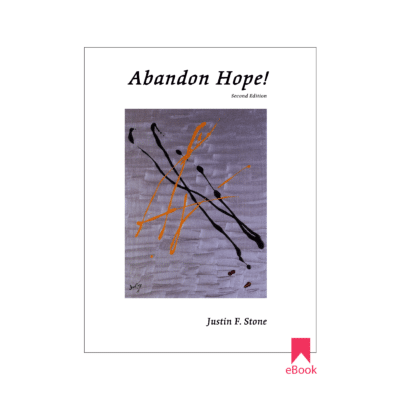
It was a rainy day in Kyoto, with the mist hanging low over the eastern mountain much like a Hiroshige woodblock print. In my small, two-and-a-half-mat room in the Zen temple, my meditation was often interrupted by the soft sound of the rain on the eaves of the temple roof — a most reflective sound that often caused the mind to wander off in memory or dream.
By late afternoon, the haze had begun to lift from the mountain so that it was possible to see the trees in the lower foothills. I paused for a cup of green tea, sitting quietly in front of the hanging scroll with just a circle on it. I caught glimpses of Mount Hiei to the east through the screens that led to the temple garden. Whenever I saw Hiei-zan, I pictured it in flames because the conqueror Nobunaga in the sixteenth century took an army up the steep slopes to the community of 20,000 people living in the temple. The army burned all the buildings, killing thousands of Buddhists. Nobunaga had warned the temple authorities to stay out of politics, and when his warning was ignored, he took the drastic step that ended the political influence of Buddhism in Kyoto forever. In my mind’s eye, I always saw the mountaintop in flames.
The rain had slowed to a drizzle and seemed about to clear entirely, so I walked out the temple gate to stroll around, taking in the fresh smell of springtime. How greedily the earth drank the moisture. The moss was soft underfoot everywhere.
I passed a small pond in which some boys had caught some tiny fish. I was surprised anything could live in the stagnant water. The still-breathing fish were placed in plastic bags half-filled with water, and the boys ran off to another game, the bags swinging wildly as they ran. I idly wondered whether fish get seasick.
Passing a three-story pagoda, I noticed the monk on top beginning to swing the huge bell while chanting a Buddhist sutra. Kan Ji Zai Bo Sa Gyo Jin, he began, fiercely intent on what he was doing. Children wet from the rain held hands, oblivious to other students wearing school uniform tops and practicing some four-part harmony under the pagoda’s overhang. Were they singing an old Japanese folksong? I could plainly hear “When the saints go marching in,” sounding strange and foreign because they were mouthing unfamiliar sounds as they did not speak English.
On the main path, bicycles whizzed by with one child, sometimes two, perched on the handlebars as the fathers rode home from work to the evening meal. And though this was a Buddhist temple, two old women were making offerings at a large Shinto shrine on the temple grounds. Each person was, marvelously, aware only of their own activity. There was a rare harmony to the overall picture.
Reaching the main street, Karasuma Doori, I was once again stimulated by the busy scene. In the arcades, shopping malls, and open markets, people were making last-minute purchases for that evening’s dinner. Grandmas carried babies on their backs and older children laughed and shouted, carrying schoolbooks under their arms. The younger ones wore yellow caps and had tiny backpacks. A karate class, barefoot and clad in white, went swinging by, chanting as they ran. Small children played with tiny boats in the gutter where the water was high, oblivious to the speeding taxis. One man was stringing lights to an overhead wire, for that night there would be a local street fair, to which children would come in their bright kimonos, eating candy, buying goldfish, and playing games. The surge of vitality was immense and fascinating.
Turning off the main street, I walked toward the riverbank. Young men were playing baseball, couples were walking quietly, and a man stood on the riverbank relieving himself in the river, not far from a public restroom. Overhead the clouds turned lavender, a color I have seen nowhere else, and there was just the trace of a distant muted sunset.
As I began to cross the narrow bridge — whose stones were old when the stones of Florence were being carved — I was delighted to meet my good friend, the university professor. He had changed from Western clothes to a formal kimono and was now on his way to a nearby shrine to pay respects to his ancestors. I fell into
step beside him, and we crossed the bridge together. A man was practicing Kendo swordsmanship on the other side, making great guttural cries. He did not notice us as we walked by.
Soon we reached the gates of the shrine and paused to look at the multicolored sky, not gaudy or grotesque, but understated like a Japanese sumi painting.
“Kirei, desu ne,” murmured my friend, and I nodded. It was beautiful. There was no need for any answer. At that moment there was an irresistible rhythm to life, a renewing in the spring rain that was beyond words — a feeling we often had after sitting hours of zazen (Zen meditation) together in the main temple on special Buddhist days. I remembered what one poet had said when he tried to describe the geese flying overhead at sunset: “I get lost in no-words.”

